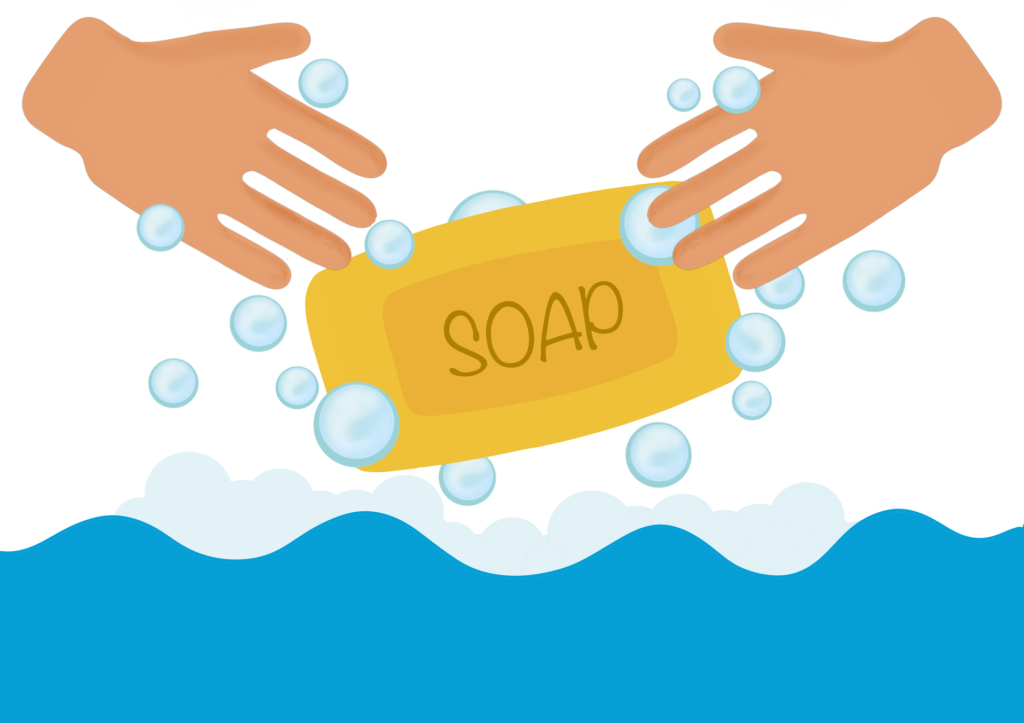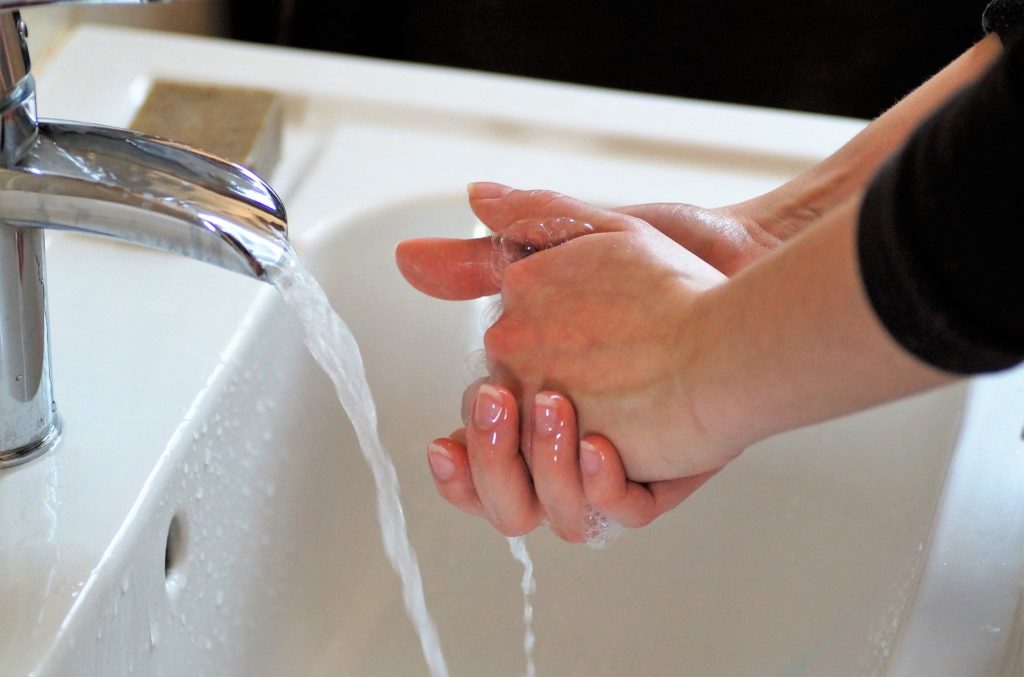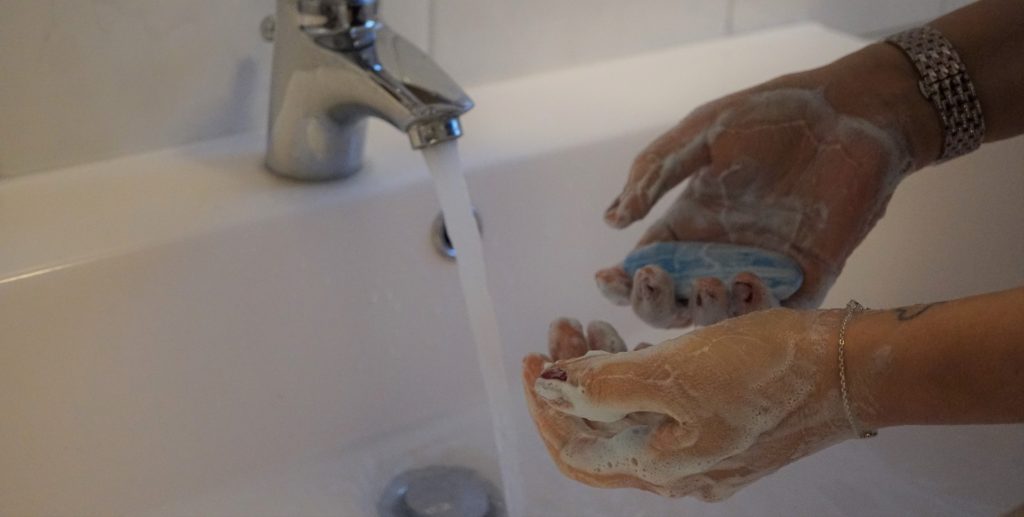Introduction
With or without a virus like COVID-19 running rampant around the world, it is of the utmost importance that everyone washes their hands frequently to reduce the spread of germs and disease. It is equally as important that everyone washes their hands the correct way. Successful handwashing always includes proper technique and proper soap.
In this article, we describe the importance of soap, the correct way to wash your hands, and our best hand soap recommendation (specifically, the best soap for dry skin).
Here's a great infographic you can embed on your site!

Embed This Image On Your Site (copy code below):
The importance of soap during an epidemic

Hand-washing is the forefront of preventing communicable diseases that are transferred via hand or surface interaction followed by touching your mouth, nose, or eyes. Communicable diseases include diarrhea, pneumonia, influenza, Ebola, and COVID-19. All of these diseases can be detrimental if contracted, especially in vulnerable populations such as the young and the elderly. Hygiene and sanitation is the best way to combat the spread of these diseases and prevent hundreds of thousands of deaths per year.
Situations where you should wash your hands:
- As soon as you come home
- After using the bathroom
- After changing a diaper
- Before preparing food
- Before eating
- After coughing, sneezing, or blowing your nose
- After touching any doorknobs, tables, desks, shopping carts, buttons, gas pumps, and other potentially infected surfaces
- Before and after interacting with someone who is sick
- Before and after interacting with someone who belongs in a vulnerable or immunocompromised population
- Before and after treating a cut or wound
- After contacting an animal or its feces
- After touching garbage and/or other waste
- After opening mail
- After putting away groceries
How to properly wash your hands

Information obtained and revised from the Centers for Disease Control and Prevention (CDC):
- Wet hands with clean water.
- Turn off running water.
- Cover hands with soap and lather your entire hands including the palms, back of both hands, between fingers, and under fingernails.
- Scrub hands with soap and water for at least 20 seconds.
- Rinse hands under clean running water.
- Dry hands by using a clean towel, air dryer, or waving them in the air.
Note: If soap and water are not accessible, an alcohol-based waterless hand cleanser or hand rub with at least 60% alcohol can be used in its place. Rub product all over hands for 20 seconds or until it has dried. Although these waterless alternatives have been shown to eliminate most germs, they cannot kill certain germs or remove dirt as effectively as soap and water can.
Different kinds of soap and their efficacy

When it comes to determining what the best bar soap or best hand soap is, it is important to note that all soaps are equally effective in removing germs when used properly. Evidence has shown that using any soap is better than using no soap at all when washing hands. Evidence has also shown that rinsing hands with just water (without soap) is better than not rinsing hands at all. Despite common belief, no evidence suggests antibacterial soap is more effective at combating dirt and germs compared to regular soap. Knowing this information, it is not about discussing which soap will be best to fend off germs–they are all equal in their effectiveness. However, there are many different forms that soap comes in from liquid and gel to bar and foam.
Dry hands from frequent washing
Soap and water are meant to break up the dirt, grease, and oil on your skin that can contain diseases. Rubbing hands together encourages friction that can dislodge germs from your hands and rinse down the drain. Frequent handwashing can strip your hands of natural oils that result in dry skin. Frequent handwashing or washing your hands with hot water can cause the skin to dry, crack, or split. In some situations, dry skin sufferers are afraid to wash their hands too often due to the uncomfortable cracking or chafing effects they experience from handwashing. Contrary to belief, there is a way you can wash your hands properly while maintaining soft and supple skin.
Vermont's Original Bag Balm Mega Moisturizing Soap
Although a soap’s ability to remove the germs from your hands does not differ between brands, certain ones are better for different skin conditions. Vermont’s Original Bag Balm Mega Moisturizing Soap is our recommendation for the best soap for dry skin. The Bag Balm company was established in 1899. It first started as a salve for cracked cow udders and farmer hands in the Northeast Kingdom in Vermont. It quickly expanded as word got around of a magic product that worked wonders. This 3.9 oz. square bar has four main ingredients:
Lanolin is a type of wax that comes from wool-bearing animals that help protect their wool and skin. In the Bag Balm soap, its purpose is to enrich, soothe, and soften the skin.
Petrolatum is used for its moisturizing properties.
>8-hydroxyquinoline sulfate acts as a preservative for the product.
>Paraffin wax binds all of the ingredients together to form a convenient bar of soap.
>The rosemary mint scent is meant to resemble its origins in Vermont. This moisturizing and cleansing hand soap softens dry and cracked hands. It also can help combat the dry winter skin many people in cold climates experience. The reparative effects of the soap will work on your dried cracks immediately.
The Bag Balm bar wins best hand soap not only for its anti-drying features but also for its multifunctional uses. The bar can be housed in the kitchen, bathroom, washroom, you name it. It is safe to use every day for all parts of your body including hands, lips, face, cuticles, feet, elbows, knees, heels, and any skin surface. Don’t worry about getting separate products for every person in the household. This product is designed for all ages and everyone in the family, including your dog’s dry paws! Although the main benefit of this megabar is its moisturizing qualities, it also can help in shaving, saddle sores, tattoo aftercare, cow udders, chafing from running, cuts, and scrapes, gymnast rips, and more!
As a company, they stand by their product. Their products are cruelty-free and have never been tested on animals. The Mega Moisturizing bar is paraben-free and sodium lauryl sulfate-free. With its 100% recycled packaging, you prevent a plastic hand soap bottle from entering the landfill!
Other handwashing resources:
Handwashing: Clean Hands Save Lives by Centers for Disease Control and Prevention (CDC)
Global Handwashing Partnership:
United Nations Children's Fund
What You Need to Know About Handwashing YouTube Video by Centers for Disease Control and Prevention (CDC)
Conclusion
Consistent and regular handwashing not only protects yourself from germs and disease, but also others who you interact with at school, work, and other places in the community. By washing your hands using the correct procedure, you can vastly decrease your chances of contracting a disease. While soap does not differ in germ extermination effectiveness, it can cause dry hands. To combat this, the author tested 6 different types of soaps. Most left chapped and raw hands that would dry out, crack, and cause pain. Only one soap stood out as a clear winner and that was a bag balm based soap. This soap won by a mile and is currently being used in our household every day. Vermont’s Original Bag Balm Mega Moisturizing Soap is the best in the business. The lasting effects and versatility of this product make it the best bar soap around, especially those with dry skin.
